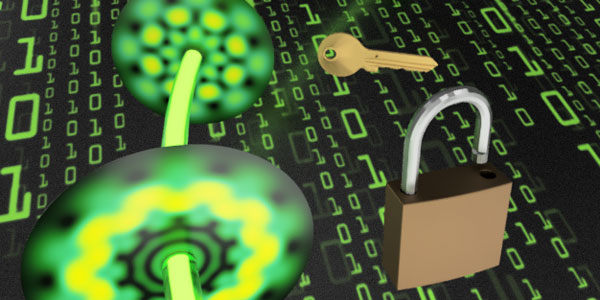Aug 3 2020
At the University of the Witwatersrand in Johannesburg, South Africa, scientists have presented a record-setting quantum protocol that helps share a secret among several parties.
 An artistic impression sharing a secret using structured light. Image Credit: Wits University.
An artistic impression sharing a secret using structured light. Image Credit: Wits University.
The research group developed an 11-dimensional quantum state and employed it to share a secret among 10 parties. The secret can be revealed by using quantum tricks only if the parties believe each other.
The study, which sets a new record for the dimension of the state (which influences how huge the secret can be) and the number of parties with whom it is shared, is an essential step toward distributing data securely across several nodes in a quantum network.
The study was published online in the Laser & Photonics Reviews journal by the Wits group under the guidance of Professor Andrew Forbes from the School of Physics at Wits University. In the paper titled Experimental Demonstration of 11-Dimensional 10-Party Quantum Secret Sharing, the Wits group overcame all the earlier records to share a quantum secret.
In traditional secure quantum communication, information is sent securely from one party to another, often named Alice and Bob. In the language of networks, this would be considered peer-to-peer communication and by definition has only the two nodes: sender and receiver.
Andrew Forbes, Professor, School of Physics, University of the Witwatersrand
Forbes continued, “Anyone who has sent an email will know that often information must be sent to several people: one sender and many receiving parties. Traditional quantum communication such as quantum key distribution (QKD) does not allow this and is only of the peer-to-peer form.”
The Wits researchers used structured light as quantum photon states to demonstrate how data can be distributed from one sender to 10 parties. They then used certain crafty quantum tricks to design the protocol such that the secret can be unlocked only if the parties believe one another.
In essence, each party has no useful information, but if they trust one another then the secret can be revealed. The level of trust can be set from just a few of the parties to all of them.
Andrew Forbes, Professor, School of Physics, University of the Witwatersrand
Essentially, at no stage is the secret ever unlocked via communication among the parties: there is no need for them to reveal any secrets. Therefore, a secret can be shared in an essentially secured way over several nodes of a network—quantum secret sharing.
Our work pushes the state-of-the-art and brings quantum communication closer to true network implementation. When you think of networks you think of many connections, many parties, who wish to share information and not just two. Now we know how to do this the quantum way.
Andrew Forbes, Professor, School of Physics, University of the Witwatersrand
The research team made use of structured photons to achieve high dimensions. Structured light implies “Patterns of light,” and in this case, several patterns could be utilized to push the dimension limit. Additional dimensions imply more data in the light and directly relate to huge secrets.
The study was carried out by students Jonathan Pinnell, Isaac Nape, and Michael de Oliveira, as well as post-doctoral fellow Najmeh Tabebordbar.
Journal Reference
Pinnell, J., et al. (2020) Experimental Demonstration of 11-Dimensional 10-Party Quantum Secret Sharing. Laser & Photonics Reviews. doi.org/10.1002/lpor.202000012.